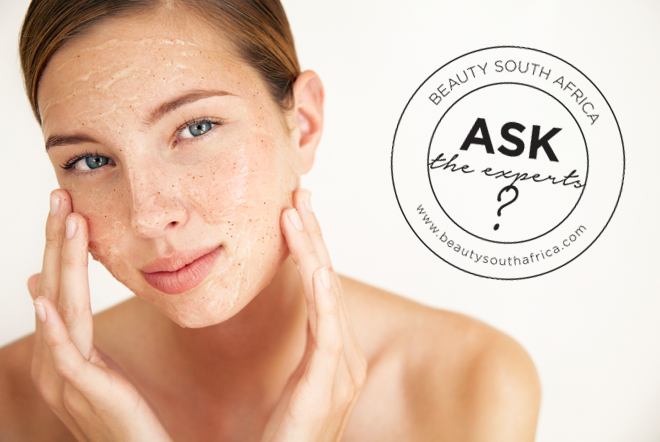
From the age of 30, our metabolic processes start to slow down, meaning that the rejuvenation of skin cells and collagen also slows down. This causes a build up of dead skin over time, which in turn leaves the skin with an overall lacklustre appearance.
It may not necessarily be noticeable from this age, but the sooner one starts clearing the dead skin cells, the more rejuvenated the skin will be, ultimately slowing down the ageing process.
In the same manner that a surface needs to be sanded down and stripped of old paint before a new layer is applied, so it works with the skin. It is essential to remove all the layers of dead skin to ensure a smooth, radiant complexion.
The key to removing dead skin is exfoliation. What you want to achieve, is to force the skin into the habit of faster cell turnover. This can be accomplished with a combination of home treatments and in-clinic procedures.
At home, you can exfoliate twice a week to ensure that the skin is soaking up the moisturiser. It is essential, however, to remember that too much exfoliation can cause a damaged moisture barrier, resulting in flaking, dehydration, and inflammation. Over exfoliation may even stimulate melanin activity causing increased possibility of hyperpigmentation, which is very relevant for darker skins in particular.
It would be advisable to rather seek professional advice about when and how often to exfoliate at home, with the prescription of the correct products.
Using the correct products is essential, and has an enormous impact on the results achieved. Your aesthetic doctor will prescribe the medical products most suited to your particular skin type and condition and will work with your in-clinic treatments.
Using products from a medical skin care range as opposed to an over the counter product have further benefits. Both the number of active ingredients as well as the percentages thereof in medical skin care products is higher, allowing the products to address particular conditions with great success.
Medical products are further formulated to penetrate the deeper level of the skin, where collagen is restored and new collagen and elastin are produced. This is ultimately the level where real change is affected.
Using the correct product in the correct manner at home is a good basis to exfoliate and rejuvenate. To further stimulate cell turnover, an in-clinic treatment programme will enhance the home routine.
Medical spa skin treatments such as chemical peels and microdermabrasion not only remove the layers of dead skin on the skin’s surface but also stimulate collagen at the deeper layers of the skin after the treatment is done.
Chemical peels vary greatly in strength, ranging from superficial peels to more invasive peels. The stronger and more aggressive the peels are, the more aggressive the exfoliation is, and the more downtime it requires. It is, however, very important for a trained professional to recommend the correct chemical peel as not all skin types require the same treatment, and it can be a dangerous procedure if not applied correctly.
Microdermabrasion is a quick procedure that requires no downtime. The skin is gently polished with crystals, lifting dead skin cells off the surface of the skin, leaving the skin smoother, softer and more radiant.
To find out more about exfoliation treatments suitable for your skin type and the four pillars to addressing ageing skin, visit Skin Renewal at www.skinrenewal.co.za





One Response
I exfoliate twice a week. I’m a bit wary of chemical peels though.